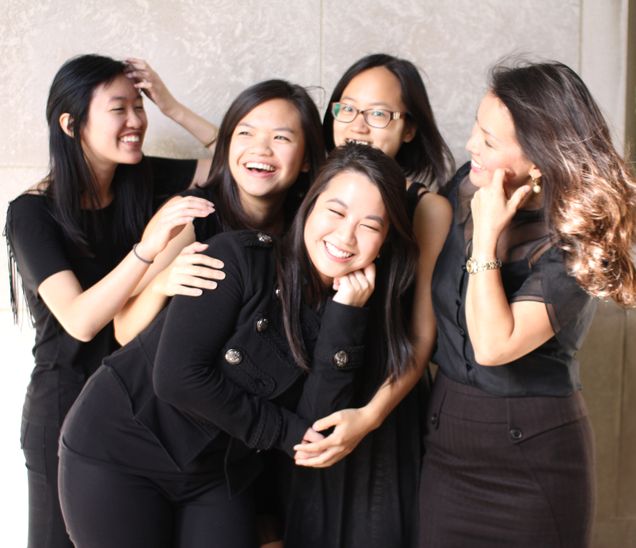Why Our Work Matters
There is a public health crisis among Asian American women evidenced by spark growth of suicidal behaviors and prevalent depression. The AWARE intervention is specifically for Asian-American women and unlike other psychotherapy models, it will integrate the issues of culture, family, and gender which speak to Asian-American women. The essence of this treatment will highlight the safety and empowerment of these women and will help participants develop coping skills.
“Healthy Women, Healthy Communities”: Targeting Physical & Mental Health Needs of Asian American Young Women
Asian American young women from immigrant families are a vibrant group – diverse, complex, and resilient. The challenges they face are unique, and “Healthy Women, Healthy Communities” seeks to address the distinct physical and mental health needs of this population
Challenges Encountered by Children of Immigrants
“Healthy Women, Healthy Communities” focused on 1.5 or second generation Asian American young women. 1.5 generation refers to individuals who immigrated to the United States during their childhood or adolescence, and second generation refers to those who were born in the United States but whose parent(s) immigrated to the United States.
Asian American women from immigrant families face the challenge of traversing between two worlds: the mainstream American culture and their parents’ culture. On one hand, growing up in the United States, Asian American women are under pressure to acculturate, or to adopt values of the mainstream American culture. On the other hand, they may be expected by parents and family members to maintain their Asian identity and values.
Gender roles is one area where Asian American women may experience conflicting expectations between the larger American culture and their families. How culture and family dynamics interplay to affect physical and mental health is currently not well understood.
Barriers to Good Physical and Mental Health
Asian American women face institutional, language, and cultural barriers to achieving and maintaining good physical and mental health.
First, while Asian Americans are frequently viewed as the “Model Minorities” in America, the reality is that only 7% of Asian American adults received mental health services in the past 12 months compared with 19.8% of non-Hispanic Whites (Substance Abuse and Mental Health Services Administration, 2020). Additionally, about 41.8% of Asian Americans with psychological distress reported unmet mental health needs (McGarity-Palmer et al., 2023), representing a lack of available mental health resources and a need for more care. The “Model Minority” myth also prevents more resources from being allocated to Asian American physical and mental health needs.
Moreover, language presents a significant barrier to receiving adequate sexual health services. While about 32% of AAPIs have limited English proficiency (AAPI Data, 2022), linguistically and culturally competent health services are often limited.
Finally, cultural factors pose additional challenges to good physical and mental health. In many Asian cultures, discussions about illness, death, and risk behaviors (substance abuse, sexual behaviors) are considered taboo.
Limited Research and the Need for Culturally Competent Services
Asian Americans comprise one of the fastest growing minority groups in the United States. According to the US Census Bureau, as of 2022, there are over 24 million Asian Americans in the US, representing 7% of the total population (Pew Research Center, 2024). The Asian American population is projected to reach 46 million by 2060, about four times the current total (Pew Research Center, 2021). Despite the substantial size of the Asian American population, there has not been a great deal of research focusing on this population.
Only 0.16% of federally funded grants were awarded to AAPI Organizations (The Asian American Foundation, 2023)
Available data suggests that Asian Americans at risk for specific mental and physical health illnesses. For example, during the COVID-19 pandemic, Asian Americans experienced a 104% increase in the probability of receiving a diagnosis of depression and were 97% more likely to be diagnosed with an anxiety disorder while Hispanics and Whites had a relatively moderate increase of 40% and 11% respectively (Lee and Howard, 2023). The need for culturally competent services for Asian American women is clear.
Data collected from “Healthy Women, Healthy Communities” informed the development of AWARE.
“Healthy Women, Healthy Communities” sought to fill the gap in research and services for Asian American women. Specifically, we were interested in exploring how cultural, familial factors, and gender roles interplay to affect physical and mental health. We gathered data specific to Chinese-American, Korean-American, and Vietnamese-American young women between the ages of 18 to 28, who are children of immigrants. With this foundational understanding, we were able to develop culturally-competent and ethnic-specific services for Asian American women.
AAPI Data. (2022, June). State of Asian Americans, Native Hawaiians, and Pacific Islanders in the United States. https://aapidata.com/wp-content/uploads/2024/02/State-AANHPIs-National-June2022.pdf
Lee, J., & Howard, J. T. (2023). Increased Self-Reported Mental Health Problems Among Asian-Americans During the COVID-19 Pandemic in the United States: Evidence from a Nationally Representative Database. Journal of racial and ethnic health disparities, 10(5), 2344–2353. https://doi.org/10.1007/s40615-022-01414-3
McGarity-Palmer, R., Saw, A., Sun, M., Huynh, M. P., & Takeuchi, D. (2023). Mental Health Needs Among Asian and Asian American Adults During the COVID-19 Pandemic. Public health reports (Washington, D.C. : 1974), 138(3), 535–545. https://doi.org/10.1177/00333549231156566
Pew Research Center. (2021, April 29). Key facts about Asian Americans, a diverse and growing population. https://www.pewresearch.org/short-reads/2021/04/29/key-facts-about-asian-americans/
Pew Research Center. (2024, August 6). Asian Americans: A survey data snapshot. https://www.pewresearch.org/race-and-ethnicity/2024/08/06/asian-americans-a-survey-data-snapshot/
Substance Abuse and Mental Health Services Administration. (2020). Behavioral Health Barometer: United States, Volume 6: Indicators as measured through the 2019 National Survey on Drug Use and Health and the National Survey of Substance Abuse Treatment Services. U.S. Department of Health and Human Services. https://www.samhsa.gov/data/sites/default/files/reports/rpt32815/National-BH-Barometer_Volume6.pdf
The Asian American Foundation (TAAF). (2023, August 24). TAAF joins WHIAANHPI and NSF to improve access to federal grants and resources for Asian American, Native Hawaiian, and Pacific Islander communities. https://www.taaf.org/news/unlocking-federal-resources
